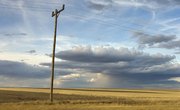Legal issues regarding property often turn on the extent to which a person can use and enjoy a parcel of property. In some instances, a person who is not the owner of a piece of land has rights to use land owned by another. In this scenario, an easement typically arises. A deed of easement is a written record that creates the easement and defines its scope.
Types of Easements
There are two main types of easements: easements in gross and easements appurtenant. The key difference between the types refers to the duration of the easement. An easement in gross is typically held by another person or entity and it does not run with the land; when the easement holder dies, the easement in gross extinguishes. An appurtenant easement affects the land itself. In an appurtenant easement, two parcels of property are involved: a dominant estate (which holds the easement) and a servient estate (which is subject to the easement). For example, if John grants an easement to Paul, giving him permission to remove timber from John’s land, Paul likely has an easement in gross. In contrast, an easement granting the owner of Blackacre permission to cross Greenacre’s land to reach a road is likely an appurtenant easement since it affects the land itself and is not held by any particular person.
Deed of Easement
Easements involve and affect interests in land, and state laws generally require some written legal document to be properly executed in order to create a valid easement. A common way to create an easement is to write up a deed of easement. This document lists the names of the parties involved, describes the property affected by the easement and specifically delineates the rights involved with the easement. In rare instances, an easement can arise without the use of a written document such as a deed, will or written contract. These deeds are known as prescriptive easements.
Recording the Deed
A deed of easement is valid as soon as it is written, signed and delivered to the easement holder. Parties should consider recording the deed of easement in the land records office to put the public on notice of its existence. For example, if John gave Paul an easement to cross John’s property to access the main highway, Paul could take that deed of easement to the local land records office and record it. Interested parties considering purchasing John or Paul’s land could then discover that an easement exists on the property. These occur through the continued use of the land over an extended period of time.
Other Issues
Deeds of easement are legal documents that describe how someone other than the owner of a parcel of property can use and enjoy that parcel of property. If the document is not properly written, the exact scope and duration of the easement could be something not desired or anticipated by the parties involved. Because of the legal nature of a deed of easement, readers should seek legal assistance before proceeding on their own.
References
- FindLaw: Easement Basics
- U.S. Legal: Real Estate Easements Law & Legal Definition
- Law Library -- American Law and Legal Information: Easement
- City of Colonial Heights Department of Public Works. "Easements - What Is an Easement?," Page 2. Accessed March 11, 2020.
- Henderson County North Carolina. "Subdivision: Right-of-Way Frequently Asked Questions." Accessed March 11, 2020.
- Majr Resources. "What Is the Difference Between Easement & Right of Way?" Accessed March 11, 2020.
- Utah Department of Commerce. "Easements." Select "Is an Easement a Property Right?" Accessed March 11, 2020.
- Expert Law. "What Is an Easement - Easement Rights and Duties." Accessed March 11, 2020.
- Trulia. "Easements: Know Your Property Rights." Accessed March 11, 2020.
- New York State Attorney General. "FAQs About Real Estate." Accessed March 11, 2020.
- Florida's Title Insurance Company. "How To Read a Title Commitment." Accessed March 11, 2020.
- Brewer Offord & Pedersen LLP. "What Is This “Easement” Thing In My Preliminary Report?" Accessed March 11, 2020.
- California Department of Insurance. "Title Insurance - Introduction." Accessed March 11, 2020.
Writer Bio
Based in Traverse City, Mich., George Lawrence has been writing professionally since 2009. His work primarily appears on various websites. An avid outdoorsman, Lawrence holds Bachelor of Arts degrees in both criminal justice and English from Michigan State University, as well as a Juris Doctor from the Thomas M. Cooley Law School, where he graduated with honors.

